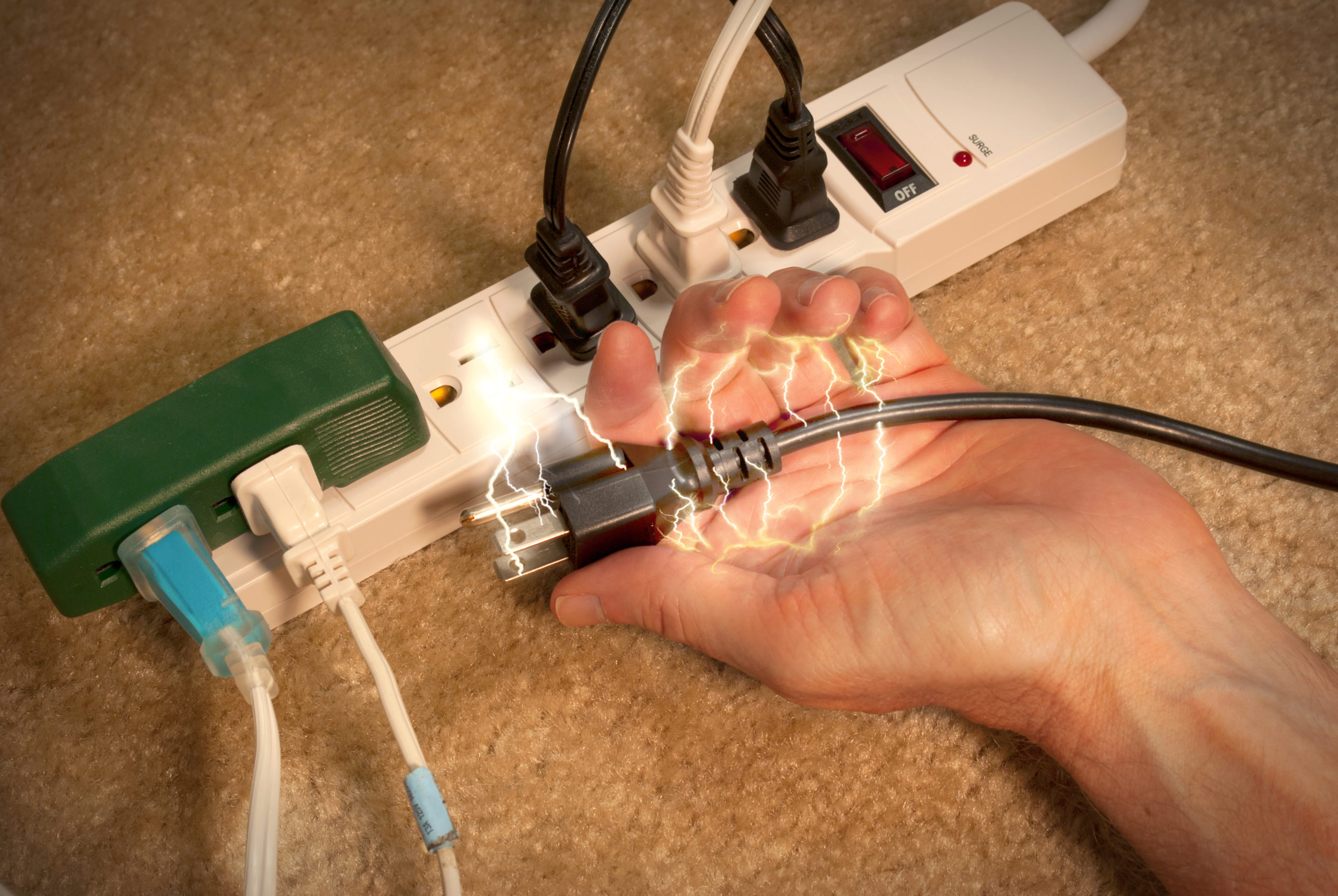What is an Electrical Injury?
We’ve all heard the term ‘electric shock’ and been told to be careful using electrical appliances around water, but what are electrical injuries and how can you avoid them happening?
An electrical injury is an injury that occurs when a person (or an animal) comes into dangerous contact with electrical currents. Electrical injuries can be caused by natural events (such as lightning), or by electrical issues in the home or workplace. Most electrical accidents happen in the home.
How serious are electrical injuries?
Electrical injuries can range from very minor burns to cardiac arrest and death. Even if it looks like someone has only sustained a minor burn from an electrical current, the person needs immediate medical attention. That’s because the electrical current causing the injury may have entered the body causing internal damage which isn’t immediately apparent and requires expert medical diagnosis.
What determines the severity of an electrical injury?
There are many factors which determine the severity of an electrical injury including the age and health of the injured person, the environment in which they were injured, where the current entered their body and how long they were exposed to the current. But by far, the biggest determinant of the severity of an electrical injury is the voltage that the person was exposed to because this has the biggest impact on the amount of current that flows through the body. Try Test and tag Melbourne if you are living in Melbourne.
Minimising the risk of electrical injury
There are relatively few serious electrical injuries in Australia because of our strict workplace safety and general safety legislation. But electrical injuries do occur and maintaining a safe electrical environment at home and at work helps to minimise the likelihood of electrical accidents happening.
Minimising the risk of electrical injury at home
Most electrical accidents happen in the home so it’s important to be vigilant about maintaining a safe electrical environment. Safety switches are required in every home. These ensure that in the event of an electrical fault, the electricity within that circuit is cut off immediately vastly reducing the risk of a serious electrical shock. You should get the safety switches in your home regularly tested and when you move into a new home, have your safety switches checked – not just to make sure that they’re working but also to ensure that every circuit in your home that should be covered by a safety switch has one in place.
Risks in the home often come from the misuse of electrical appliances. Never use electrical appliances near water and be vigilant with babies and small children. One of the most common ways that very young children incur electrical injuries is from chewing power cords.
Minimising the risk of electrical injury in the workplace
Workplace safety regulations govern the use of electrical equipment in the workplace. These regulations vary by industry depending on the type of business you operate.
Some businesses (such as building and construction) are considered ‘hostile environments’ as there’s a higher likelihood of damage to electrical equipment and therefore a higher risk of electrical injury. Electrical compliance tests such as the testing and tagging of appliances is mandated for those industries.
Every business owner has a duty of care to their employees, their customers and anyone who enters their workplace. Electrical safety is just one aspect of this duty of care.
Tips to ensure you have a safe electrical environment in your workplace:
- Test and tag. Regularly testing and tagging all appliances that are used in the business is one way to minimise the risk of electrical injury in your workplace.
- Use appliances safely. Even if appliances have been tested to ensure they are safe to operate, they also need to be used in a safe manner. That means not using them near water unless they are appliances designed for that purpose, being careful with power cords to ensure they are not overloaded and that they are taped down if they’re in an area where other people may have to walk over them.
- Get RCDs tested. Your business will have RCDs (residual current devices) or safety switches installed to ensure the electrical current is immediately disconnected in the event of an electrical emergency. These should be checked regularly by a professional.
Organize to have your electrical circuits tested regularly. Electrical fault loop testing checks the integrity of your electrical circuits. This helps maintain a safe environment but also stops unnecessary damage to electrical equipment that may be plugged into that circuit. Must do PAT Testing every month.
Always use a reputable supplier for any electrical safety work including testing and tagging at your workplace. Make sure you use a reputable supplier when you have your electrical environment checked and your appliances tested. Jim’s Test & Tag are qualified technicians and can provide you with a free quote for all types of electrical testing, phone 13 15 46 for more information or to book in a test and tag service.
Disclaimer
This information is produced as a guideline only and is not intended to replace the advice of a medical expert. In an emergency, always call 000 as your first point of contact.
What is an Electrical Injury?In Australia 2022, What determines the severity of an electrical injury?
Test and tag Melbourne, Minimising the risk of electrical injury, Minimising the risk of electrical injury at home ,
Minimising the risk of electrical injury in the workplace, testing and tagging, Test and tag.
Get RCDs tested, Organize to have your electrical circuits tested regularly, Electrical fault loop testing


